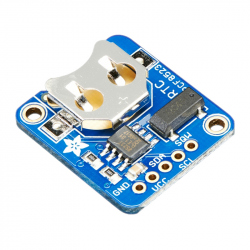Dupa plasarea solicitării de comandă, in sectiunea Istoric puteti vedea cate solicitări de comandă mai avem de procesat inaintea dumneavoastra
Program de lucru: Luni - Vineri 9:00 - 18:00, pauza 13:00 - 14:00.
Se efectueaza lucrari de mentenanta la site si pot aparea erori. In cazul in care intampinati erori va rugam sa reincercati mai tarziu.
Ridicarea personala este disponibila pentru comenzile achitate in avans. Se pot ridica dupa ce sunt pregatite.
Niciun produs
 Mărește
Mărește
Multiplexor de Alimentare TPS2113A cu Conector USB Micro-B
0104110000010629
Produs nou
Multiplexor de alimentare TPS2113A cu conector USB Micro-B ce vă permite să selectați una din două surse de alimentare.
Acest produs nu mai este in stoc
- Scrie o recenzie
- Elimina acest produs din lista mea de favorite.
- Adauga acest produs la lista mea de favorite.
- Imprimă
Informații
Caracteristici tehnice:
- Tensiune de alimentare: 2.8V - 5.5V (IN1 poate începe de la 1.5V, cât timp IN2 începe de la 2.8V);
- Curent maxim de ieșire: 2A.
Dimensiuni: 1″ × 0.55″ × 0.15″.
Modulul are 3 pini de control:
- EN - enable;
- VSNS - by default, pinul este pulled down și este selectat modul în care se autoselectează sursa de tensiune cu o valoare mai mare;
- ILIM - limitare de curent între 0.5A și 2A.
Modulul reprezintă un multiplexor de tensiune cu ajutorul căruia puteți să selectați una din două tensiuni de alimentare. Circuitul integrat poate să opereze cu tensiuni între 2.8V și 5.5V și cu curenți de maxim 2A.
Pentru mai multe detalii, consultați pagina producătorului.
Recenzii
Clienții care au cumpărat acest produs au mai cumpărat:
-

Modul RTC...
Modul RTC Adafruit PCF8523
$10.80
-

Antena Tip...
Antena Tip Arc pentru 433 MHz
$0.24
-

Comutator...
Comutator Magnetic Reed Normal Deschis 2 x 14 mm
$0.36
-

Pilon din...
Pilon din Plastic Alb Semitransparent 5x5x20 mm
$0.10
-

Cablu...
Cablu Alimentare Sata LA 2 X Sata 0.15M
$2.16
-

CD4069 (6...
CD4069 (6 Invertoare)
$0.24
-

Mufa...
Mufa Alimentare Bricheta Panou
$0.96
-

Convertor de...
Convertor de niveluri logice bidirecțional pe 8...
$1.56
-

Driver de...
Driver de motoare dual DRV8833 util pentru...
$18.00
-

Suport de...
Suport de Baterii 1 x 18650
$0.84





